Air exchange rate in office premises: norms and rules for organizing proper air exchange
Agree, working in a stuffy office with stale air is very unpleasant - you feel very tired, a constant desire to go to sleep, as well as unmotivated irritability. The reason for this condition is extremely simple - insufficient oxygen content in the inhaled air.
That is why ensuring proper air exchange in offices is one of the most difficult problems of modern construction. To determine the standards and requirements regarding what the air exchange rate should be in office premises, numerous experiments and studies were carried out.
The result of this work is the preparation of regulatory documentation containing air exchange rate standards. It is impossible to provide them without proper arrangement of the ventilation system.
The content of the article:
Legal norms and requirements
Air exchange standards set out in SP 60.13330.2016, are determined by the purpose of the office and the number of people working in it.
The document contains the following requirements for air exchange rate (per person):
- room used for operational meetings - 60 m³/h;
- manager's office - 60 m³/h;
- manager's reception room - 40 m³/h;
- meeting room - 40 m³/h;
- open space (open office) - 30 m³/h;
- corridors and halls - 11 m³/h;
- restrooms - 75 m³/h;
- smoking rooms - 100 m³/h.
Ensuring adequate ventilation of the room is important not only from the point of view of industrial safetysnosti. We are talking about people's health and the quality of work.

Stale, stuffy air does not contribute to improving the working capacity of the team, which means that work efficiency deteriorates and the company suffers economic losses. Failure to comply with the provisions set out in SNiP 41-01-2003 requirements will not only cause the imposition of penalties, but will also entail many functional problems.
Requirements for office ventilation systems
The rules are extremely simple and clear.
In order to maintain the air exchange rate in office rooms, the following things must be ensured:
- Systematic flow of O2-enriched air.
- Removal of exhaust air with a high concentration of CO2.
- Removing dust and other contaminants from the supply flow.
Meeting all the above requirements and taking into account air exchange rates per person, the ventilation system will ensure proper air exchange in the room, even if natural ventilation of the office is not carried out at all.
For example, in some business centers, office premises are located in underground floors and have no windows at all.
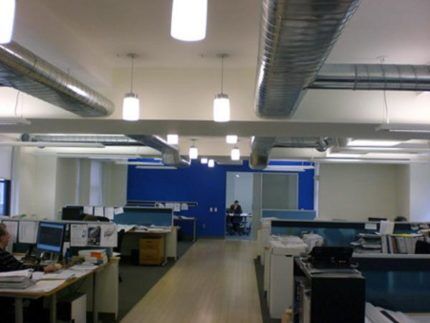
There are also requirements relating directly to the ventilation system itself. Only a ventilation system that 100% complies with them can be used in a modern office.
Here are the most significant criteria:
- Silence.
- Economical energy consumption.
- Possibility of adjusting the functional parameters of the system, ease of management.
- Functionality combined with compactness.
- Easy to install, no need for major repairs.
Proper organization of air exchange allows you to rationalize the use of space in commercial premises.
Moreover, the conditions in an office located on the 3rd floor and, for example, in a basement, will not be different.
Types of air exchange organization
How the ventilation issue will be resolved is up to engineers and designers to decide. The main thing is that everything meets the requirements.
Depending on the characteristics of the building and the functional and engineering characteristics of the room in which air exchange must be ensured, one of the following systems is selected:
- supply and exhaust ventilation is the most popular solution when equipping all kinds of offices;
- supply and exhaust with recovery heat;
- inlet and typesetting supply and exhaust;
- central air conditioning system.
Due to their functional features, the first two systems received the most popularity.
In Europe, recuperation systems are installed almost everywhere. Although each of the listed options has its own advantages.
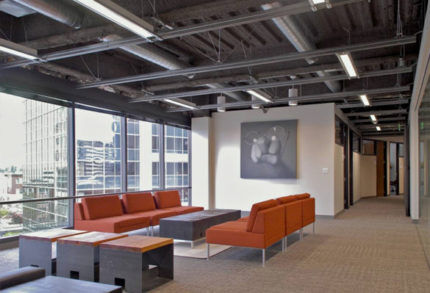
In general, the choice is differentvisibility ventilation system is explained by several factors.
The most significant of them are:
- office space area;
- layout and number of working people;
- the number of working equipment in the room.
All these criteria must be taken into account when choosing the type and capacity of the installed system. For a better understanding of the issue, it makes sense to consider in more detail all the features of each of the above types of ventilation systems.
Supply and exhaust system
The operating principle of this ventilation system can be characterized as follows: through the street openings with grilles, a flow of fresh air enters the supply unit, where it is cleaned, heated or cooled.
And only then, through branches, it enters each office space. The system is simple and reliable in operation, suitable for both large and small rooms. With its help, air is supplied and removed in an organized manner.
The air pressurization function has priority if the office space is located near a kitchen or smoking room (the pressurization function means preventing the penetration of smoky air into other rooms).
It is important to design the supply air supply paths and the location of the supply air duct openings in such a way that the formation of “stagnation” in the air flow is excluded by definition.
In parallel with this, there should not be a feeling of draft. Another important function of ventilation is to ensure the most even distribution of incoming fresh air throughout all rooms.

The demand for supply and exhaust equipment is explained by its numerous advantages. The vast majority of offices are equipped with it.
First of all, you need to pay attention to the following advantages of this system:
- indoor air enriched with carbon dioxide is constantly replaced with fresh air;
- In addition to the fact that the air supplied inside the offices is pre-cleaned, it is also heated;
- humidification of the air flow is ensured. This function is not present in all models of ventilation devices;
- energy consumption is saved.
A simple and universal scheme that allows you to create a project for almost any room, regardless of architectural and design features. Even if we are talking about a pre-revolutionary building.
At the same time, one cannot fail to mention the disadvantages of using supply and exhaust ventilation:
- Noisiness is due to the rotation of the fan blades.
- There is no provision for cooling the incoming air flow during the warm season.
Accordingly, there is a need to install specialized equipment used to normalize the climate inside the building.
And it’s impossible to provide a high level of comfort with such noise.
Features of the supply ventilation system
Injection of fresh air flow inside is ensured by supply ventilation equipment.
Air with a high CO2 content is removed through the openings of the ventilation shaft.
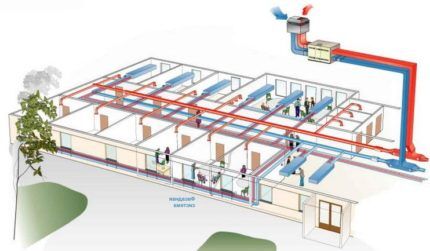
Using fresh air ventilation in the office provides a number of benefits.
The most important of them are listed below.
- the system ensures intensive air circulation in the spatial environment and a continuous supply of O2-enriched air to all offices located in the building;
- the air masses entering inside are qualitatively cleaned;
- heating of the incoming air flow to the required temperature is ensured. Due to this, it is possible to ensure the proper level of comfort;
- energy consumption is saved. This becomes possible by equipping the supply and exhaust devices with a heat recuperator. The device makes it possible to heat the incoming air flow with heat that is removed from the offices - it is possible to “put into action” up to 80% of the energy that would otherwise be wasted. In this case, no mixing of flows occurs, the quality of the supply air remains unchanged.
Disadvantage: installation of supply ventilation is a rather expensive procedure. However, its cost cannot be called unjustified.
Central air conditioning system
The use of the system is relevant in small offices - ducted air conditioners provide optimal ventilation and purification of the air flow in small rooms.
Most often, the place to install a ducted air conditioner is a corridor or a bathroom.
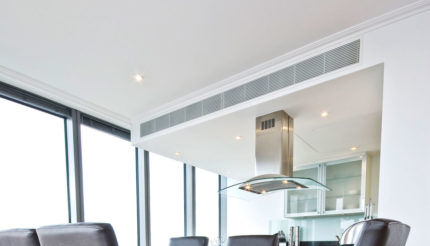
The internal unit is not provided for by the system design. It is not possible to set a specific temperature for each room. For offices with an area exceeding 200 sq.m. not used.
Central air conditioners are also used to install ventilation systems. These devices are used to ventilate large areas, and the air conditioners themselves are quite large in size. Most often, they are installed on the roof of a building or in the basement.
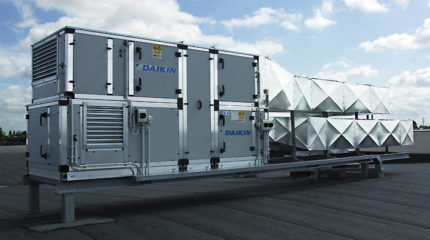
An important advantage of central air conditioners is their versatility. The devices include several sections.
Mandatory elements are elements that provide:
- cooling/heating;
- filtration;
- noise absorption;
- air humidification.
Expensive, but at the same time profitable solution. Most often, it is used in buildings divided into production and office parts.
Drawing up an office ventilation project
Considering that ventilation is a complex engineering system designed to provide a constant flow of clean and fresh air, remove harmful compounds and create comfortable conditions, the need to develop a project is beyond doubt.
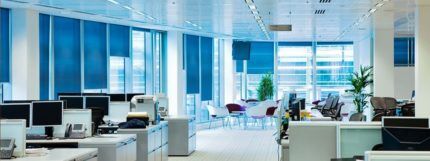
It should be borne in mind that each ventilation system has its own characteristics. Therefore, a project is being developed exclusively for a specific room, adjusted for all its features.
Takes into account:
- The number of personnel present in the premises at one time.
- Requirements for temperature and/or humidity standards, cleanliness from dust and other harmful substances.
- Architectural features - the height of the room, the presence of beams and other utilities.
It is not difficult to guess that it is almost impossible to take into account all the nuances listed above without drawing up a preliminary project.
That is why, before starting work, a detailed design of the ventilation system is drawn up.
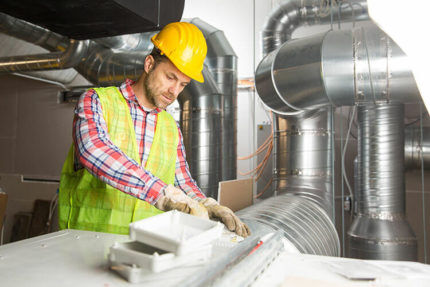
Attempts to install a ventilation system without first creating a project almost always resulted in unfavorable consequences.
What to consider at the design stage?
At the design stage of the ventilation system, the following points are subject to approval:
- Features of the architecture and design of an office building/offices.
- Equipment location.
- The probable location of the channels through which the air flow will flow.
- Electrical installation power indicator.
- Availability of water supply, as well as possible ways to drain condensate. Ensuring free access to the ventilation system.
- Possibility (if necessary) of making changes to the design.
In the design of the ventilation system, make adjustments for work air conditioning systems It’s not worth it as another source of air exchange.
This can be explained very simply - only the ventilation system provides adequate air exchange.
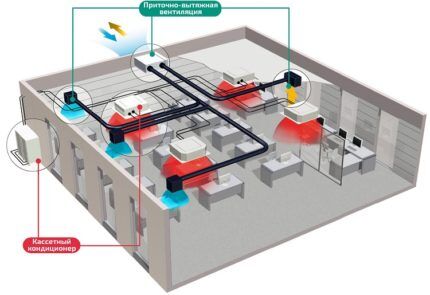
Air conditioners are designed to improve the characteristics of incoming air (temperature correction, humidification, purification from harmful components), but not a single one, even the most modern air conditioner, will provide an influx of fresh, O2-enriched air.
Another issue is central air conditioners with fresh air supply, which can provide a supply of air that meets all the requirements.
The ventilation network design process includes calculations:
- Exchange of air flows.
- Communication schemes.
- Heat inflows. The calculation is carried out for each room separately, adjusted for the technical and design features of the structure.
- The cross-sectional area of the paths along which air flows exchange occurs.
- Pressure loss through the network of ventilation ducts.
- Required heater power.
In addition, the equipment necessary for completing and assembling the ventilation network is determined. Project documentation is drawn up and all details are agreed upon.
Conclusions and useful video on the topic
A professional’s opinion regarding the installation of a ventilation system and ways to ensure adequate air exchange in the office:
Compliance with the requirements of SP 60.13330.2016 and SNiP 2.04.05-91 Change No. 2 allows us to ensure comfortable working conditions in the office premises.
The required air exchange rate can be provided by several types of ventilation systems, with their own advantages and disadvantages. All these nuances must be taken into account when choosing and drawing up a project.
Do you have questions about ensuring air exchange in the office? Ask our experts, and we will help solve your problem.



